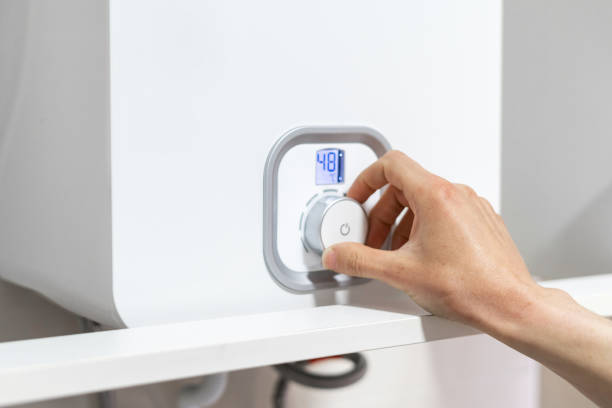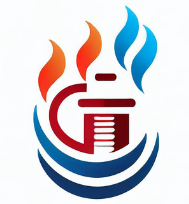Having the right water pressure in your boiler is crucial for it to heat your home efficiently. If the pressure is too low, your boiler may not work properly. If it’s too high, it could indicate a leak or other issue. Luckily, adjusting boiler pressure is usually a simple process.

Checking Your Boiler Pressure
The first step is to check your boiler’s current pressure level. Here’s how to find it:
Combi boilers – The pressure gauge is typically on the front display panel. Look for a digital readout or dial gauge. The ideal pressure range is usually between 1 and 2 bars.
System/regular boilers – The pressure gauge will be connected to the pipes under the boiler or near the hot water cylinder. Look for a dial gauge with color indicators – green is good, red is too low or high.
No pressure gauge? If you have a gravity-fed system with tanks in the attic, your system is not pressurized. You can skip pressure adjustments.
When to Check Boiler Pressure
| Time to Check Pressure |
|---|
| Monthly during heating season |
| After bleeding radiators |
| If heating problems arise |
| When the boiler is off/cold – pressure varies when hot |
Increasing Boiler Pressure
If the pressure reads below the normal range, you need to add water. Here’s how:
- Turn off the boiler and let it fully cool – at least 1 hour.
- Find the filling loop, usually connected to the boiler pipes with two valves.
- Attach the free end of the filling loop to the cold water inlet valve.
- Open both valves slowly. You should hear water entering.
- Watch the pressure gauge rise. Stop at 1-1.5 bars.
- Close both valves fully.
- Remove the filling loop. Catch any drips.
- Turn boiler back on. Reset if needed.
Tip: If pressure won’t increase, your home’s water pressure reducer may be limiting flow. Contact a plumber if pressure won’t reach 1 bar.
Decreasing Boiler Pressure
If pressure is too high, over 2 bars, try these steps:
- Check that all boiler valves are fully closed. Tighten if needed.
- Bleed a radiator to release excess pressure. Open the radiator valve and close when water squirts out.
- Check pressure – repeat bleeding if still too high.
- Make sure filling valves are closed.
- Contact a plumber if pressure remains high.
Warning: If pressure exceeds 3 bars, turn off the boiler immediately and shut off water at the main valve. Call a plumber.
When to Check Boiler Pressure
- Monthly during heating season
- After bleeding radiators
- If heating problems arise
- When the boiler is off/cold – pressure varies when hot
Maintaining the right boiler pressure prevents problems, keeps your heat working, and can save on repair bills. Know how to check and adjust pressure and your system will operate at peak efficiency.
Safety precautions if pressure exceeds 3 bars
If your boiler pressure rises above 3 bars, it is critical to take immediate action. Shut off the boiler and isolate it from the water supply by closing the main shut-off valve. High pressure can damage components and lead to leaks, flooding, or dangerous steam explosions. Do not attempt to fix high pressure yourself. Call a professional boiler technician to inspect and service the boiler before restarting it.
How water expands and pressure varies when hot
Water expands when heated, causing the pressure inside a boiler system to increase as well. This thermal expansion is normal, and the pressure relief valve helps regulate it. However, the pressure gauge reading will be higher when hot water is flowing versus when the boiler is cold and inactive. Check pressure when the boiler has been off for an hour or more to get the stable “cold” reading. Expect the pressure to rise up to 1 bar when hot. If it exceeds the high limit, there may be an issue.
Troubleshooting tips if pressure won’t increase
If the filling loop won’t increase pressure, ensure valves are fully open and check that water is flowing. The home’s main pressure reducer may limit flow into the boiler – set above 2-3 bars, this may prevent filling the system. Try a slower fill and see if the pressure creeps up over time. Also, bleed radiators in case trapped air is blocking water flow. If problems persist, consult a boiler service technician.
Long-term maintenance guidance
To keep your boiler in good shape, perform annual servicing at the start of each heating season. This should include a full inspection, testing all functions, checking and replacing worn parts, and optimizing the pressure. Professionals can also check for leaks, corrosion, clogs, and other hidden issues. Schedule maintenance even if your boiler seems fine, as preventative care is much cheaper than emergency repairs down the road.
Summary
- Check the pressure gauge on the boiler or pipes.
- Look for the ideal range, usually 1-2 bars.
- Add water through the filling loop if pressure is low.
- Bleed a radiator to release excess pressure if too high.
- Monitor monthly and after bleeds or issues arise.
Proper boiler pressure is vital for efficient heating. Learn to check and adjust as needed. Contact a professional if you have persistent pressure problems.
FAQ
Q: Where is the pressure gauge on my boiler?
A: On the front panel for combi boilers, under the boiler or near the hot water cylinder for system/regular boilers.
Q: What is the normal boiler pressure range?
A: 1-2 bars is ideal for most boilers.
Q: Why does my boiler pressure drop?
A: Leaks, bleeds, or expanding water as it heats. Top up water through the filling loop.
Q: Why is my boiler pressure too high?
A: Valves left open, overfilling, or a faulty component. Bleed radiators and check valves.
Q: How often should I check boiler pressure?
A: Monthly in heating season, after work is done, and when problems occur.
